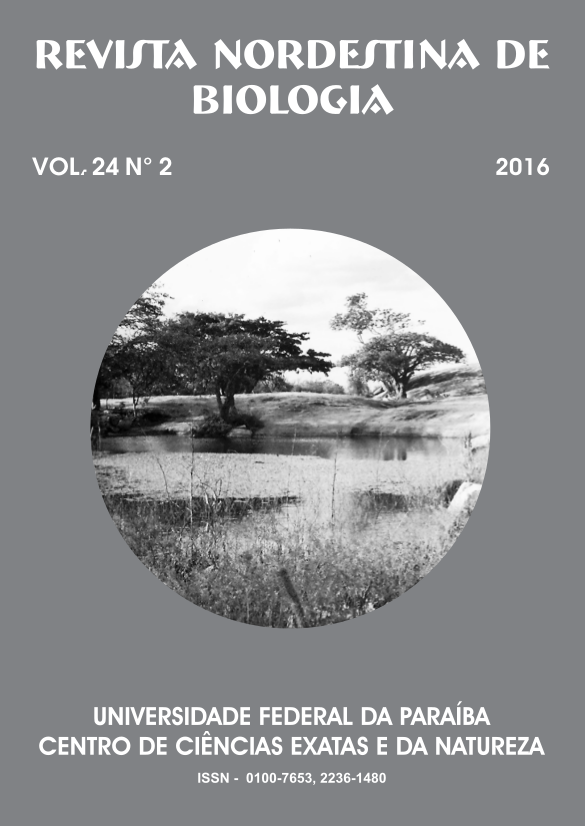COMPOSITION, REPRODUCTION AND ECOLOGICAL ASPECTS OF A CAATINGA ANUROFAUNA IN PARAIBA STATE, BRAZIL
Palavras-chave:
Anurofauna, Caatinga, Composition, Ecology, Reproduction, Paraíba, BrazilResumo
The study area is located at 7°22‘S and 36°15’W, in the Cariri Paraibano, one of the driest regions of Brazil. It has typical Caatinga vegetation and a diversity of natural and artificial water bodies. Eighteen species of anurans belonging to the families Pipidae, Leptodactylidae, Odontophrynidae, Bufonidae, Hylidae, Phyllomedusidae and Microhylidae were recorded. From each species data on activity, reproduction, behavior and microhabitat were obtained. Each of the 15 water bodies studied was described and the presence of the different forms of anurans throughout the study period, from 1982 to 1984 was recorded. All species had the reproductive period regulated only by rainfall and did not show any special adaptations or specific reproductive strategies for the semi-arid environment. The differences between species in the occupation of the water bodies and the duration of the reproductive period did not seem to be related to a temporal or spatial partition of the environment. Seven different reproductive modes have been recorded, all of which are also found in more mesic habitats.Downloads
Não há dados estatísticos.
Downloads
Publicado
2017-01-24
Edição
Seção
Artigos
Licença
Os originais aceitos e publicados tornam-se propriedade da Revista Nordestina de Biologia, sendo vedada sua reprodução total ou parcial, sem a devida autorização da Comissão Editorial, exceto para uso de estudo e pesquisa, desde que citada a fonte.



